With the crises of biodiversity loss and climate change combined with social inequality and nearly two billion more mouths to feed by 2050, the Science Museum’s new exhibition is timely.
Future of Food invites visitors to explore a new future for the global food system which puts nature, people and planet first.

Visitors to the exhibition begin their journey with the stories behind familiar foods, discovering how science enabled growing populations to be better fed in the 20th century but also left a challenging environmental legacy.
Items on display range from a vial of acide margarique, a fatty substance developed by French chemist Michel Chevreul that led to margarine, to a Chicken McNugget, with the hidden environmental costs behind industrially produced foods laid bare – from cash crops such as corn and soya to intensively produced meat and processed foods.
The story behind a solitary blight-infected potato leaf from 1847 on loan from the fungarium of the Royal Botanic Gardens Kew provides a stark warning of the dangers of growing crops of the same variety in a monoculture food system at vast scales.
The fragile leaf in our exhibition is one of the few surviving specimens collected during the Irish potato famine which claimed millions of lives.
Monoculture farming today makes up 80% of the world’s land for growing crops such as corn, soya and cereals. Monocultures are highly susceptible to disease, weeds and pests and rely on pesticides, fertilisers and machinery to grow them.
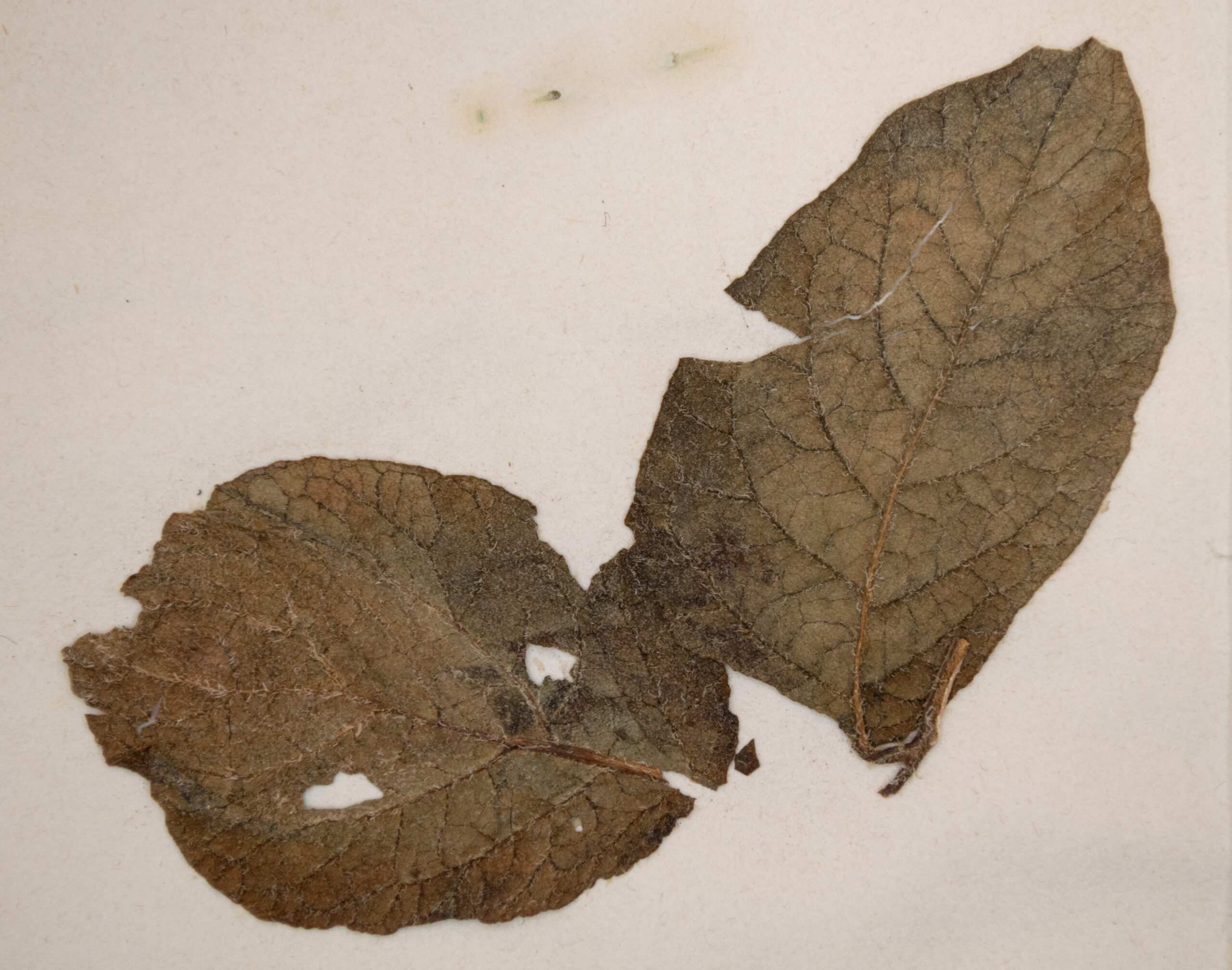
Fears that the global population would outstrip the food supply are not new and were preoccupations in the 19th and 20th centuries too – but were overcome thanks to significant scientific advances.
One of these leaps forward was the discovery that nitrogen was critical to plant growth and enhancing crop yields – exemplified by wheat from 1899 on loan from Rothamsted Research in Hertfordshire.
Scientists grew these wheat plants under different conditions to find out what makes them grow best. The shortest received no fertilisers or farm yard manure. The others were each given their own fertiliser mix. The tallest wheat received the largest amount of nitrogen.
Visitors to the exhibition can also marvel at German chemist Fritz Haber’s first sample of ammonia from 1909. His chemistry breakthrough was finding an efficient way to combine nitrogen from the air with hydrogen to form liquid ammonia. This innovation paved the way for synthetic nitrogen fertiliser (first produced on an industrial scale by chemical giant, BASF, in 1913). This industrial process changed food production and helped feed billions.
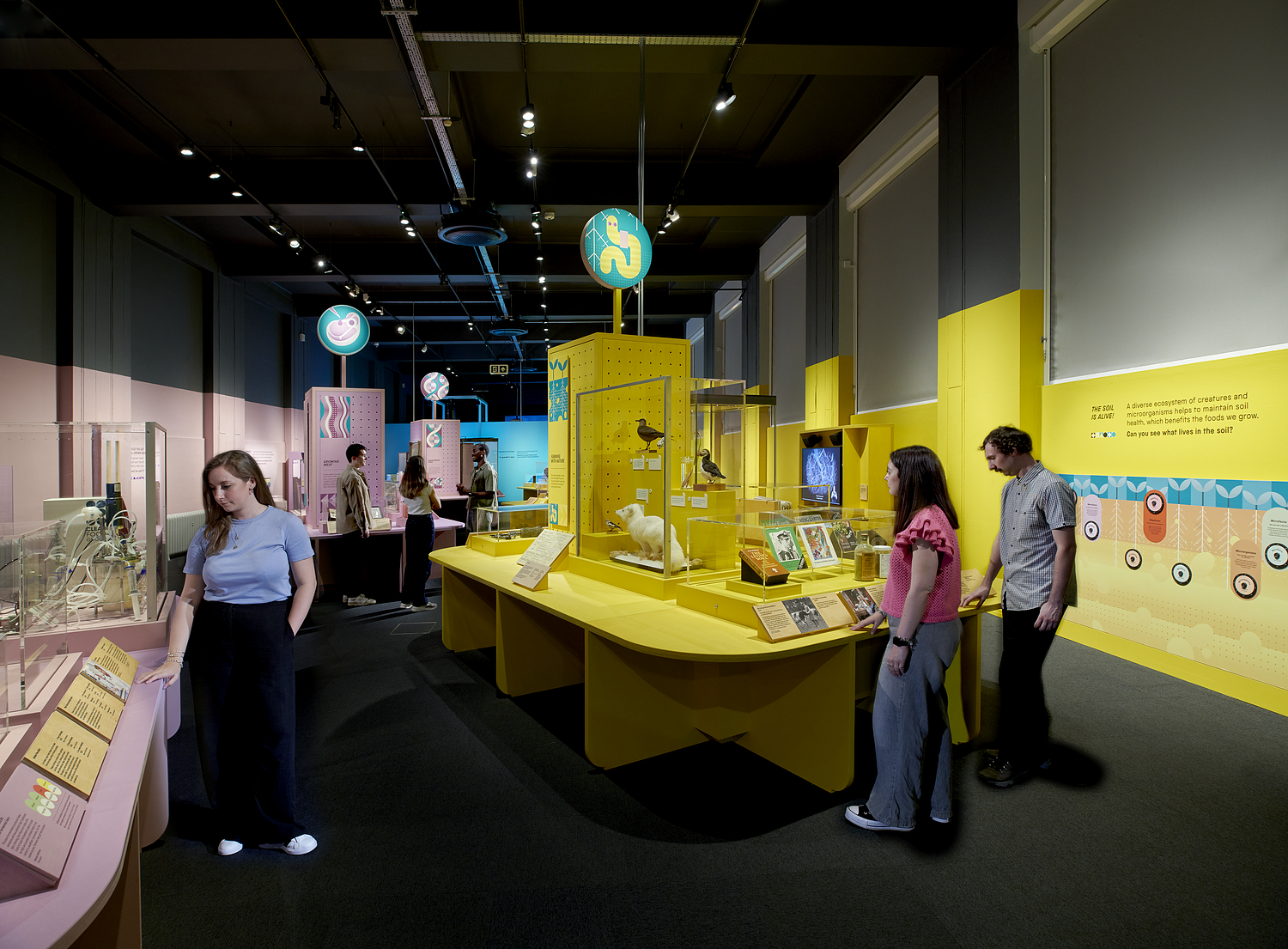
After introducing the challenges we face, the exhibition invites visitors to explore the advances in ecology and biotechnology that may provide solutions for the future of food.
Stand out objects include a 3,500-year-old loaf of bread found in the tomb of Egyptian Queen Hatshepsut, and on loan from UCL Petrie Museum, representing humanity’s oldest biotechnology, fermentation.
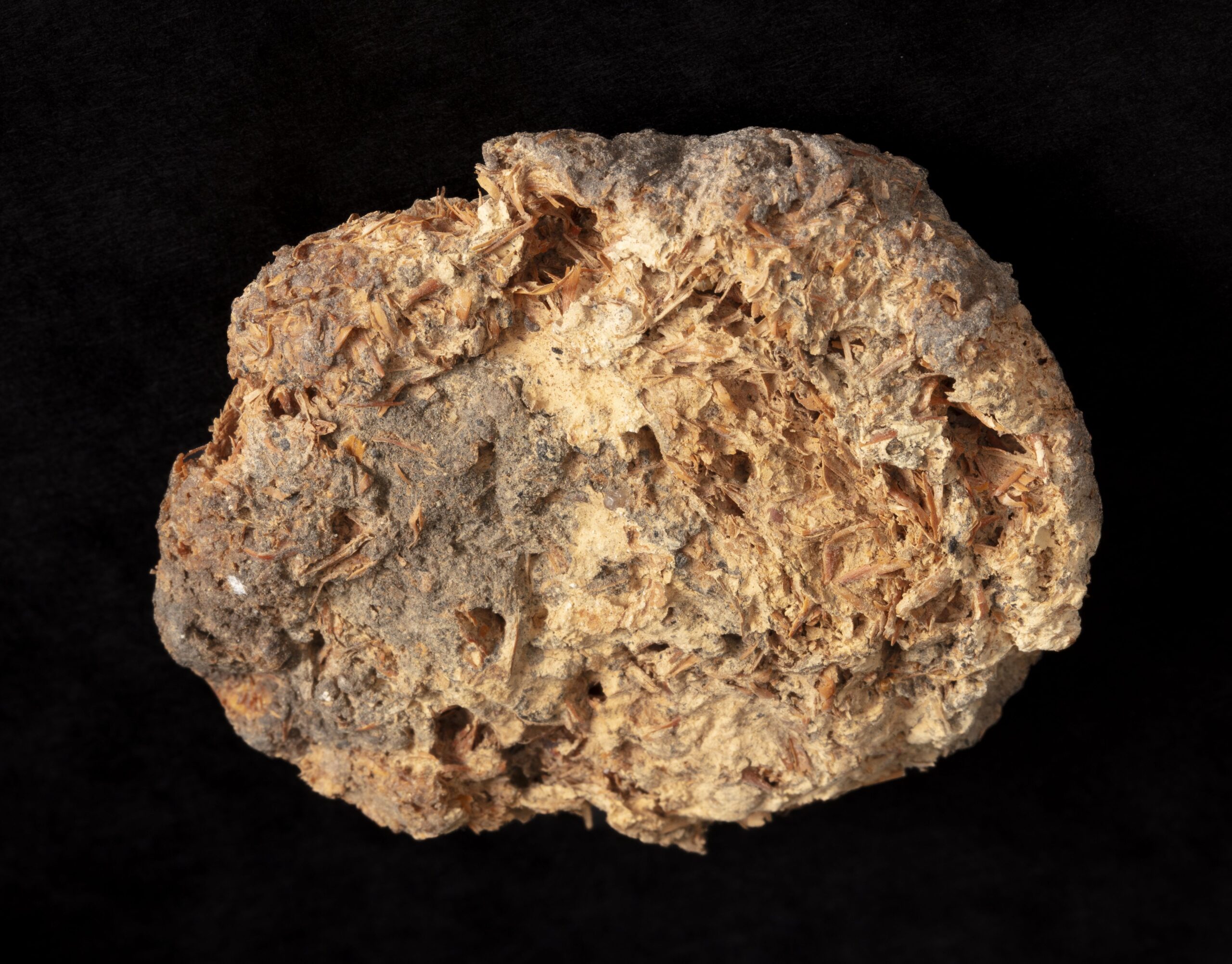
Next to this sits a working fermentation bioreactor, which makes a sustainable alternative to palm oil from yeast and food waste.
Prof Chris Chuck and his team at the Clean Food Group have experimented with this bioreactor, feeding used coffee grounds and surplus bread to yeast which sustainably produces oil in its cells as it grows. The oils are extracted and refined, producing a sustainable alternative to palm oil which can be used to make peanut butter, chocolate and ice cream.
These prototype foods may soon appear on supermarket shelves and could help reduce demand for palm oil, which has been associated with the destruction of forests in South East Asia.
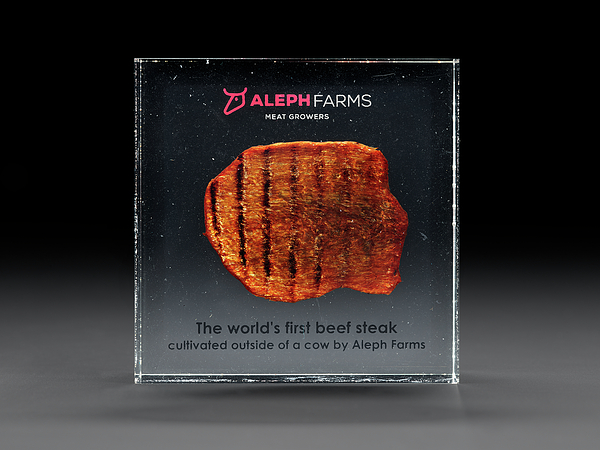
The first beef steak grown outside a cow from 2018 is also on display – which took just four weeks to produce. In comparison, industrially farmed beef takes up to two years to produce and has one of the highest carbon footprints of any food. In the future, cell grown meat and fish could provide less carbon intensive alternatives.
A recent piece of legislation in England – the Genetic Technology (Precision Breeding) Act of March 2023 – allows for the development and sale of gene edited animals and crops in England, which in turn could help boost food production and combat food security issues.
This bird flu-resistant taxidermy chicken on display was developed with DNA-edited cells by scientists at the Roslin Institute, near Edinburgh. With millions of birds dying in recent years due to bird flu, these chickens could play a critical role in helping to prevent flu viruses from spreading to wild birds and humans.
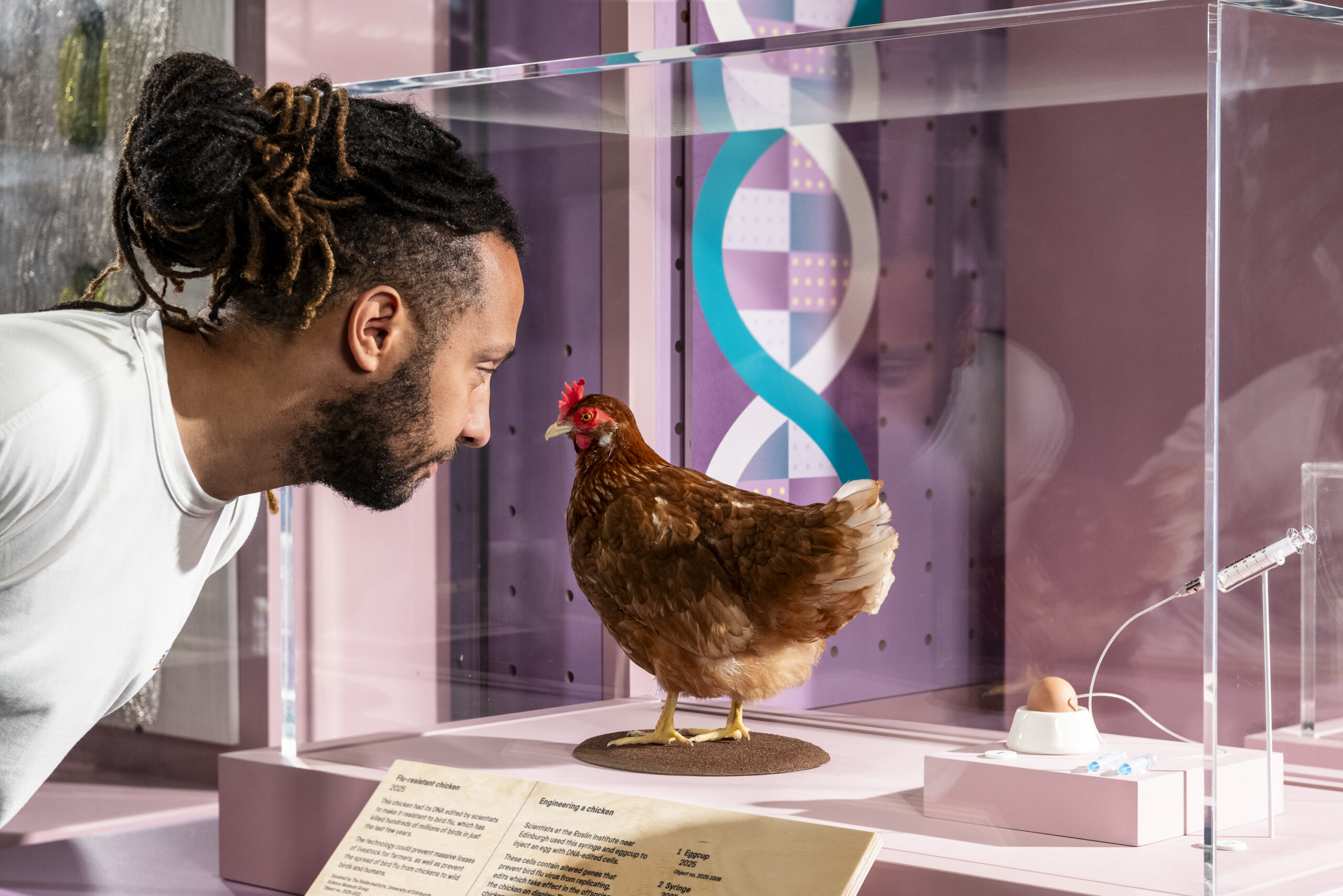
Visitors can also see potato and wheat plants developing inside a working growth chamber in the exhibition, and discover more about genetic engineering experiments in an accompanying video.
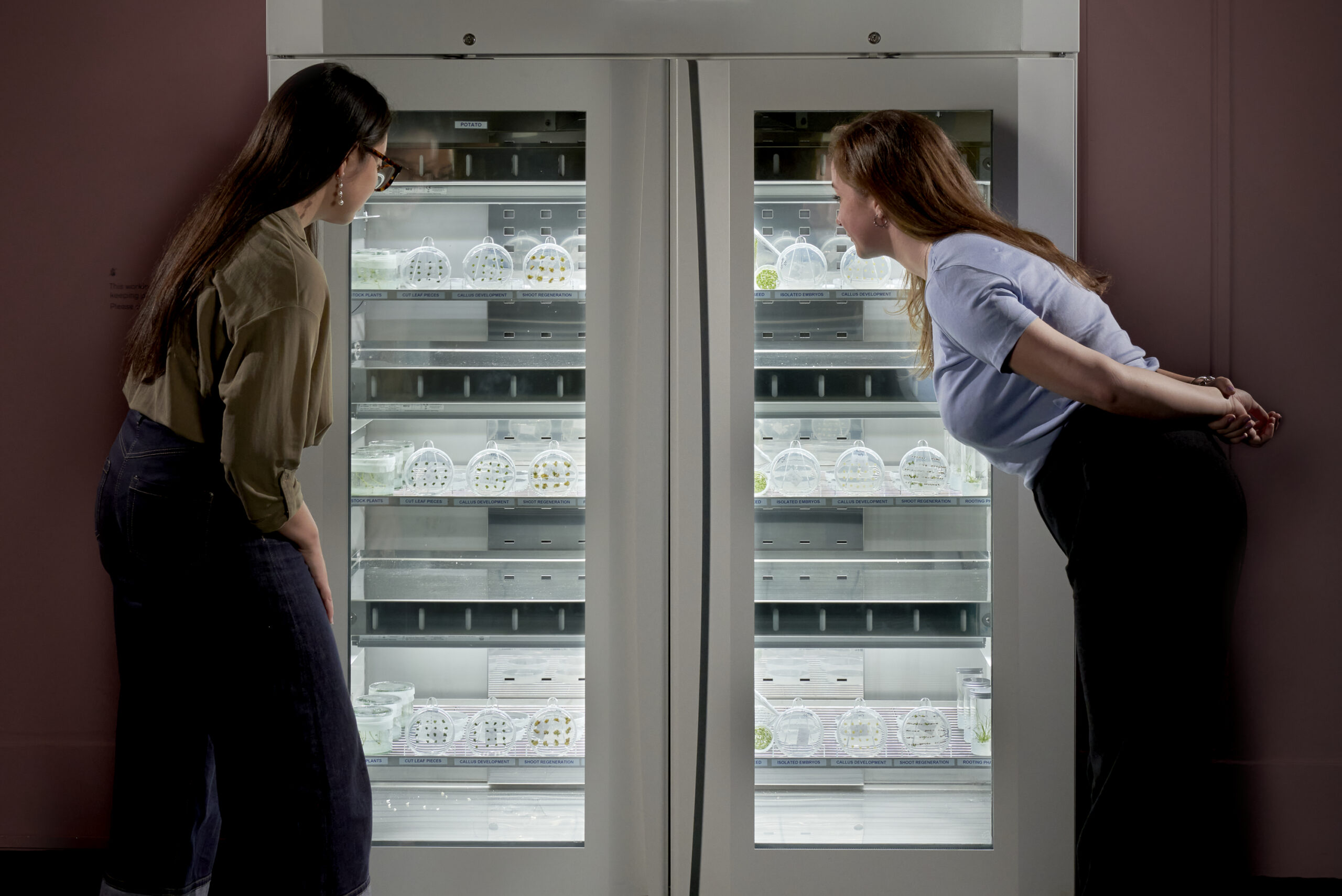
Future of Food also celebrates ecological approaches to food production from across the globe.
One in three mouthfuls of food globally relies on wild pollinators such as bees, hoverflies, wasps, beetles and moths pollinating our crops.
Research by Professor Lynn Dicks and her team at the University of Cambridge shows how bee populations are impacted by the amount of pesticides used in farming, with visitors able to see bees her team collected from different farms.
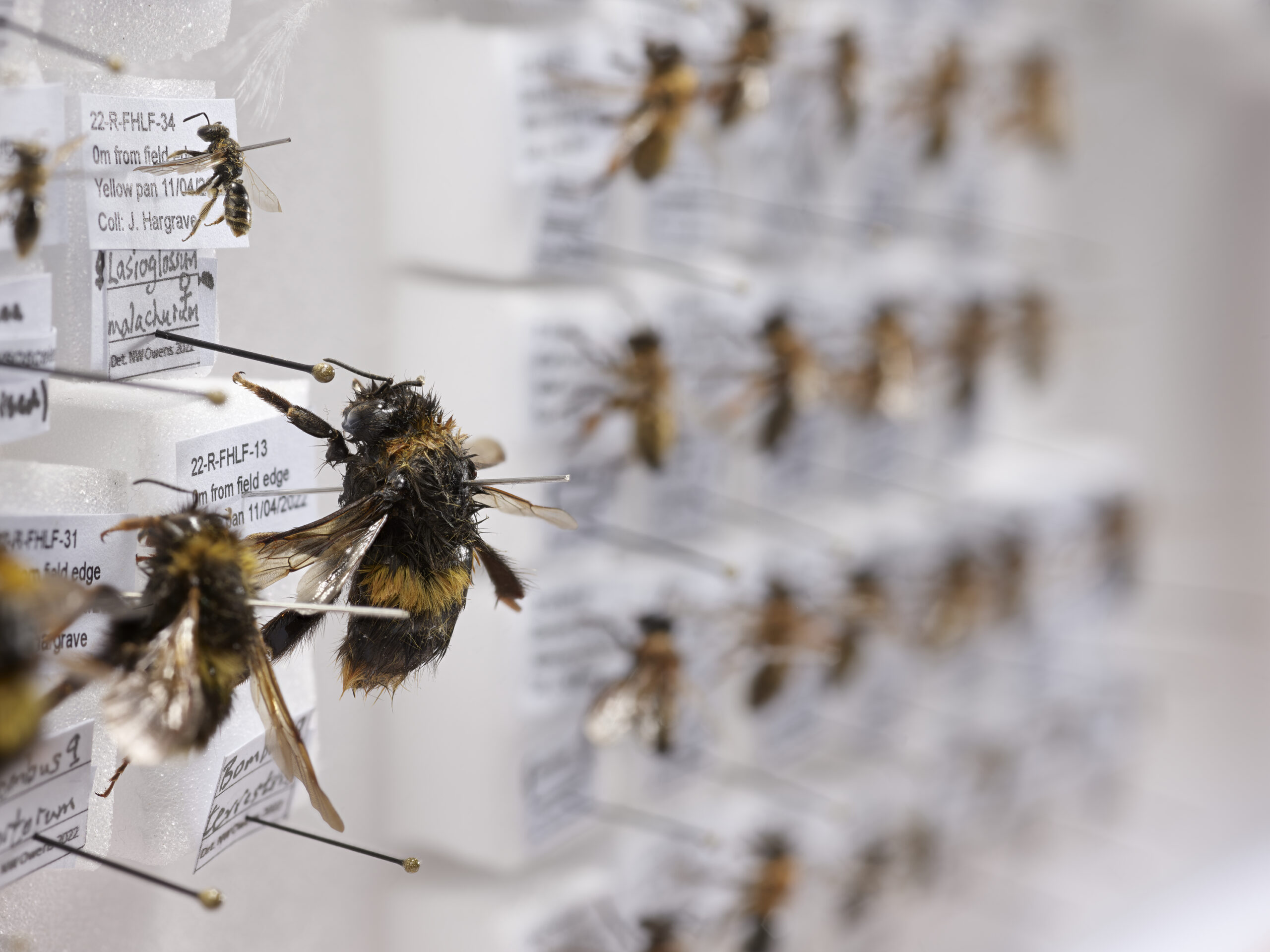
Buoys, ropes and net used for growing seaweed and shellfish tell the story of Câr y Môr – a community-led sea farm in Pembrokeshire in Wales, whose vertical underwater ‘gardens’ of seaweed and shellfish regenerate the ecosystem while also providing ingredients for the sale of Kelchup – a seaweed derived ketchup.
Seaweed sequesters carbon dioxide from the atmosphere, reducing ocean acidity while the scallops and mussels help detoxify the water.
Also on display are jars of soil collected 178 years apart from the same field – the Broadbalk wheat experiment. The world’s longest-running agricultural experiment is taking place at Rothamsted Research in Hertfordshire.
By analysing this soil, scientists discovered that synthetic fertilisers reduce the amount of bacteria helpful to plants, supporting some claims that that synthetic fertilisers can degrade soil health.
To this day, scientists still make use of these samples to research different questions such as those relating to improving crop yields in the context of a hotter climate with more extreme weather.
Although there are over 50,000 edible plants, 90% of our food comes from just 15 crops. With this in mind, visitors can learn more about the critical work of researchers at Royal Botanic Gardens Kew to research useful traits in wild relatives of common crops to future-proof them against climate change.
Wild seeds from the Millenium Seed bank at Wakehurst, Kew, are part of a collection of 12 million seeds, from across 25 countries. The Crop Wild Relatives project is conserving wild relatives of food crops that hold useful traits, such as resistance to drought, floods, pests and diseases. Scientists can breed these traits into crops that are vulnerable to disease and extreme weather such as bananas and carrot, helping create new resilient varieties.
Key to tackling this challenge are seed vaults, such as at Svalbard in Norway which is featured in the exhibition. Over 1.2 million seed samples have been collected from national seed banks from across the globe and are now stored at −18°C in the vault. Its purpose is to protect our food supply from future threats such as climate change and conflict.

This Madke earthen container comes from a community seed bank in India, which provides farmers with free access to local seeds adapted to growing in the region that farmers replenish after each harvest. Seed-swapping ceremonies, which are helping regenerate rainforests and providing food for indigenous communities, are also celebrated in the exhibition.
Community kitchens and seasonal veg boxes could also play a role in the future. The exhibition highlights Made in Hackney, an east London community cookery school offering free cooking classes, alongside a Peruvian community kitchen, with a display featuring a giant spoon used by Flavia Huarangoy to cook at the Rising Sun kitchen.
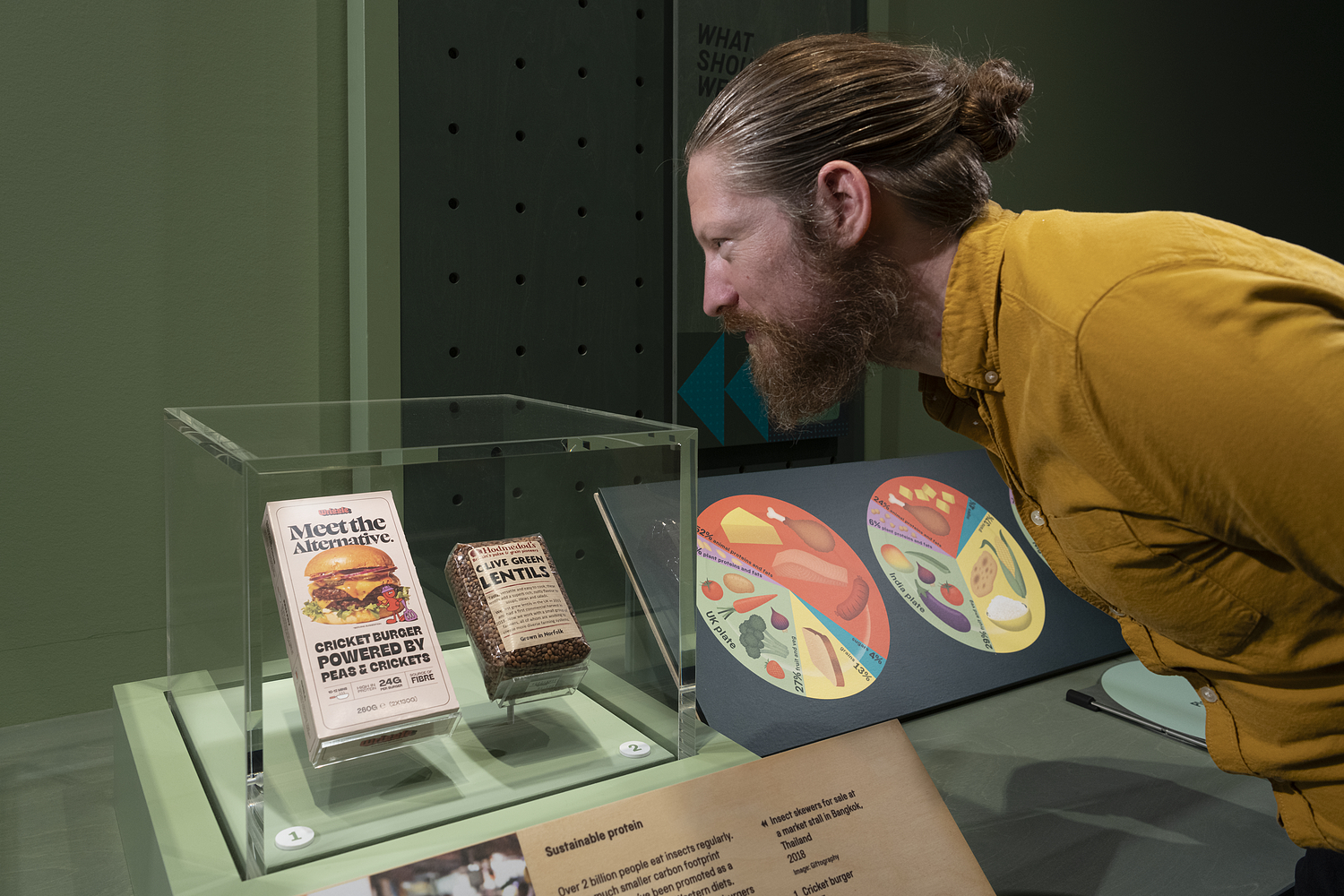
An exhibition about the future of food would not be complete without insects, which are eaten regularly by two billion people across the world. With a much smaller carbon footprint than meat, they are being promoted as a sustainable protein for Western diets. And recently insect-based foods, such as the cricket burger featured in the exhibition, have been trialled in Europe.
The exhibition is deliberately playful with interactive moments dotted throughout. Visitors can feed a growing city in a giant multiplayer game, using the knowledge they have learned from the exhibition and watch as their choices are projected onto a vast digital landscape to reveal how their decisions impact the climate, food production and nature.

Our exhibition ends with scientists, ecologists, and community food producers sharing their dreams and ambitions for a new future of food, which we hope will inspire visitors to do the same and consider how their everyday choices can contribute to putting nature first for a sustainable future for food, people and planet.
The Future of Food exhibition is free to visit and is open at the Science Museum until 4 January 2026.
Future of Food has been made possible thanks to the generous support of the Coller Foundation (Principal Funder), Tate & Lyle PLC (Principal Sponsor), UKRI Biotechnology and Biological Sciences Research Council (Major Funder), The Huo Foundation (Major Funder), Benugo (Major Sponsor), AKO Foundation (Associate Funder) and The Montreal Estate.
A menu inspired by the exhibition will be available at the museum’s cafes. Created by Benugo, the museum’s café operator and Major Sponsor of the exhibition, the new dishes will feature nature-friendly ingredients such as fermented plant proteins, insects and dairy alternatives, reflecting how food might taste in the future.
